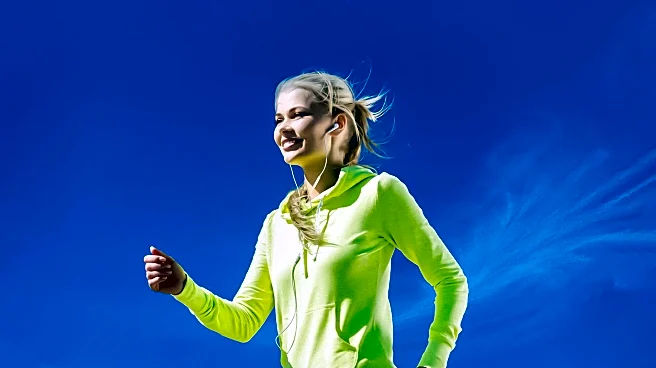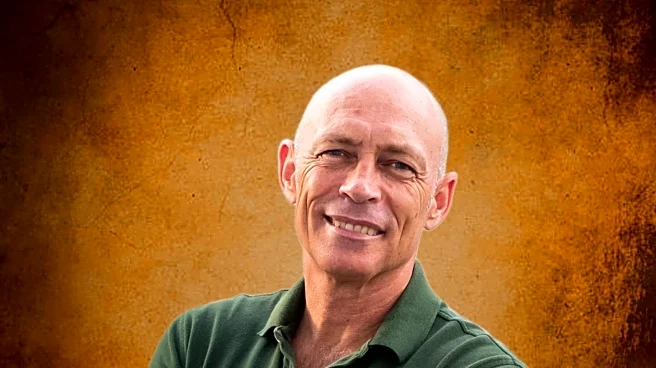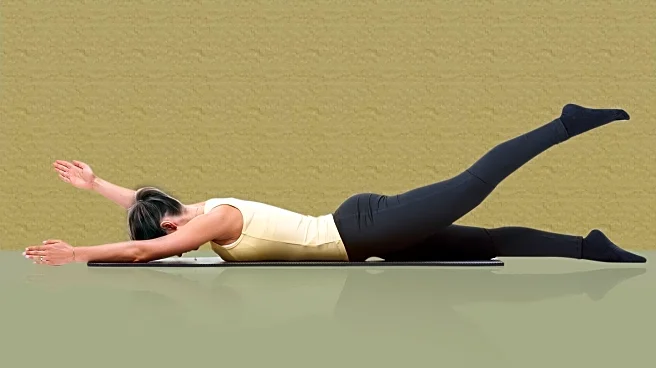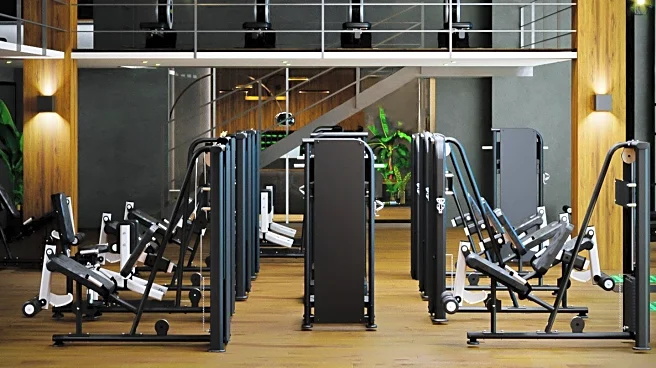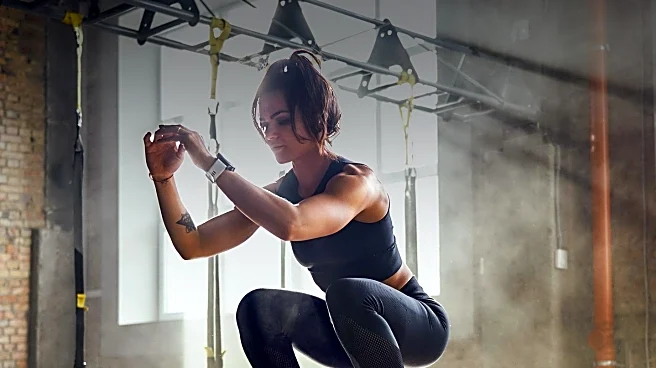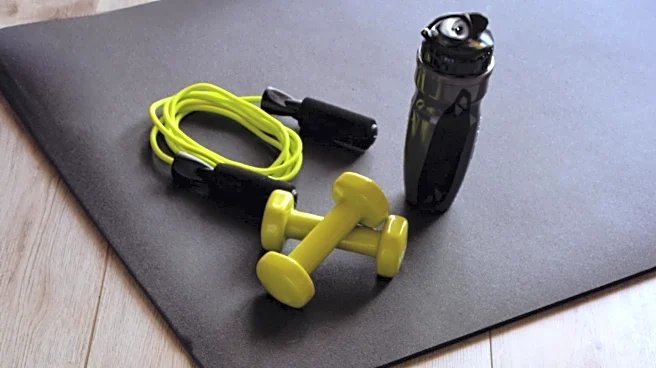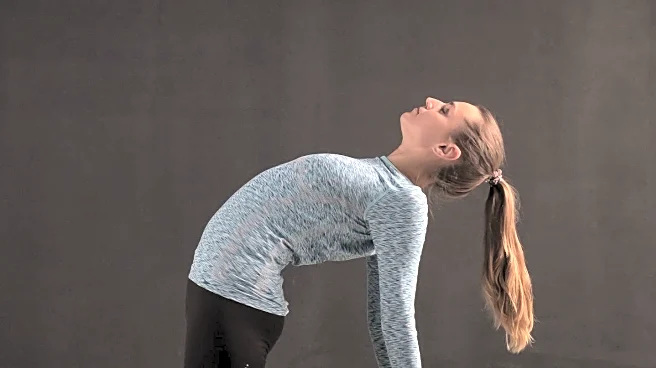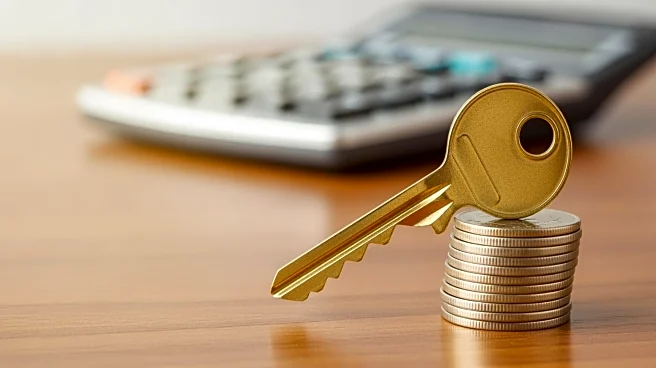What's Happening?
The high-heeled squat is being highlighted as a beneficial exercise for aging individuals, according to Dr. Kate Ella, a personal trainer and former orthopedic surgeon. This exercise involves performing
a standard squat while shifting weight onto the toes, which helps improve balance, strengthen the thighs, glutes, and calves, and enhance core stability. Dr. Ella emphasizes the importance of this exercise in maintaining mobility and strength as one ages, suggesting it can be easily incorporated into daily routines, such as while brushing teeth or waiting for the kettle to boil. The exercise is particularly noted for its ability to improve ankle stability and mobility, which are crucial for everyday movements and preventing falls.
Why It's Important?
As the population ages, maintaining physical health and mobility becomes increasingly important to reduce the risk of age-related diseases and injuries. Exercises like the high-heeled squat can play a significant role in preserving muscle mass, bone density, and balance, which are essential for independent living. By strengthening key muscle groups and improving balance, this exercise can help prevent falls, a common and serious risk for older adults. Additionally, the ease of incorporating this exercise into daily life makes it accessible for many, potentially reducing healthcare costs associated with age-related physical decline.
What's Next?
As awareness of the benefits of the high-heeled squat grows, it may become a staple in fitness routines aimed at older adults. Fitness professionals and healthcare providers might begin recommending this exercise more frequently as part of a comprehensive approach to healthy aging. Further research could explore its long-term benefits and effectiveness compared to other exercises. Additionally, adaptations and modifications of the exercise could be developed to cater to individuals with varying levels of fitness and mobility.
Beyond the Headlines
The promotion of exercises like the high-heeled squat highlights a broader cultural shift towards proactive health management and the importance of maintaining physical activity throughout life. This trend reflects a growing recognition of the role of exercise in not just physical health, but also mental well-being and quality of life. As society continues to age, such exercises could become integral to public health strategies aimed at reducing the burden of chronic diseases and enhancing life expectancy.


